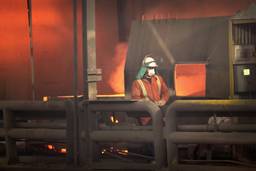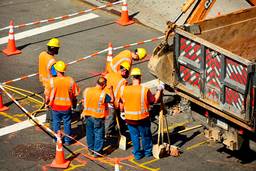In Columbus Ohio, a 5-year-old girl jumped onto Santa’s lap last month and asked if he could give her dad a job as an elf.
Mike Smith, who works the Santa station at the Polaris Fashion Place in Columbus, asked why, the Wall Street Journal reported. The little girl in the Dora-the-Explorer sweat shirt responded: “Because my daddy’s out of work, and we’re about to lose our house.”
Happy Holidays America.
The gift this country needs most this holiday season is an economy built on a solid foundation, one that will provide middle class, family-supporting jobs now and into the future.
That present would not be another version of Monopoly for Wall Street wannabees. It would not be Barbie-goes-to-the-mall-credit-cards for youngsters in families already maxed out on their plastic and their mortgages.
The metaphorical gift our economy could really use is an Erector set – a strong steel construction kit from which the intrepid manufacture airplanes, automobiles, robots on motorized tracks, backhoes, helicopters, skyscrapers, cranes, even working Ferris wheels.
That’s because, most of all, this economy needs manufacturing. Enthralled by the glitz, glamour and bogus bonuses of Wall Street, we’ve allowed multinationals to export our grit and grimy factories overseas. Factories that made clothing, sports shoes, large appliances, tire, glass and so much more in big and small U.S. towns and transferred to China and Indonesia and India, lured not just by cheap labor, but also by lavish government subsidies and absent environmental regulations.
Manufacturing, the basis of any strong economy, has continuously declined as a percentage of the U.S. gross domestic product since its World War II peak, when it was 28.3 percent. Its new low is less than half of that — 12 percent.
Here’s the most obvious difference between an economy based on manufacturing and one based on Wall Street: You can hold the handlebars of Harley-Davidson in your hands, but just try grasping a derivative.
The paper traders on Wall Street bundle mortgages into exotic financial instruments called derivatives, sell those, buy pseudo-insurance to secure them, then engage in legal betting on whether the “instruments” will soar or fail. This kind of activity caused the financial collapse in 2008. Frankly, beyond being incredibly risky, these transactions don’t create true wealth; they just generate big bonuses.
In manufacturing, an entrepreneur takes raw material and adds energy, ingenuity, tools and labor to create a product – like steel. That has real value and can be sold on the market to someone who needs it to combine with other materials to make finished merchandise like motorcycles or refrigerators. And those manufactured items are durable and valuable.
In the process of manufacturing, many people are employed – to get the raw materials, whether it’s limestone or iron or trees, to transport it to a factory, to generate electricity to run the factory, to transform the raw material at the factory, to deliver the product to the buyer, to pave the roads and build the bridges and repair the railroads necessary for all that transportation, to design the highways and factories and overpasses, to feed all the workers lunch.
Tragically, the Great Recession caused by Wall Street has hit manufacturing hard. While unemployment is at a 25-year high of 10 percent, the unemployment in manufacturing has run a couple of percentage points higher than that. More than 2.1 million manufacturing workers have been thrown out of their jobs since the recession began in December 2007.
These workers are the parents of children in Dora-the-Explorer sweat shirts who are asking Santa for elf jobs.
These are the workers who have cut back on doctor visits or medical treatments – although almost half are suffering from depression or anxiety, a New York Times/CBS poll of unemployed adults showed.
These are the workers who told the pollsters that the frustration and stress of unemployment has provoked conflicts and arguments with family and friends.
These are the workers who have lost their homes or have been threatened with eviction or foreclosure, who have difficulty paying bills and have resorted to borrowing money from friends and relatives. These are the workers profiled by Anne Hull of the Washington Post in a story that began by describing desperate laid off Warren, Ohio residents in a pawn shop:
“At campaign time, they are celebrated as the people who built America. Now they just want to know how much they can get for a wedding band.”
These are workers selling their precious keepsakes to survive 15 percent unemployment in an area along the Mahoning River that once was the world’s fifth-largest steel producer – until it lost 50,000 of those family-supporting manufacturing jobs and another 11,500 middle-class jobs at the Lordstown General Motors plant all in a decade.
These workers could be holding good, steady factory jobs if the United States had implemented a manufacturing strategy, the way China, Japan, Germany, even The Netherlands did long ago.
Just last week, the Obama administration offered a gift to all those who believe in manufacturing. It is that strategy for America. Its formal name is the White House Plan to Revitalize American Manufacturing.
For that five year old girl in the Dora the Explorer sweat shirt. For her furloughed father and her family. For the future of this country, let’s give ourselves the gift of a future constructed on a solid economic foundation. Let’s implement that plan to revitalize American manufacturing immediately. Millions of unemployed workers can’t wait.
This post was originally published at the USW Blog.







